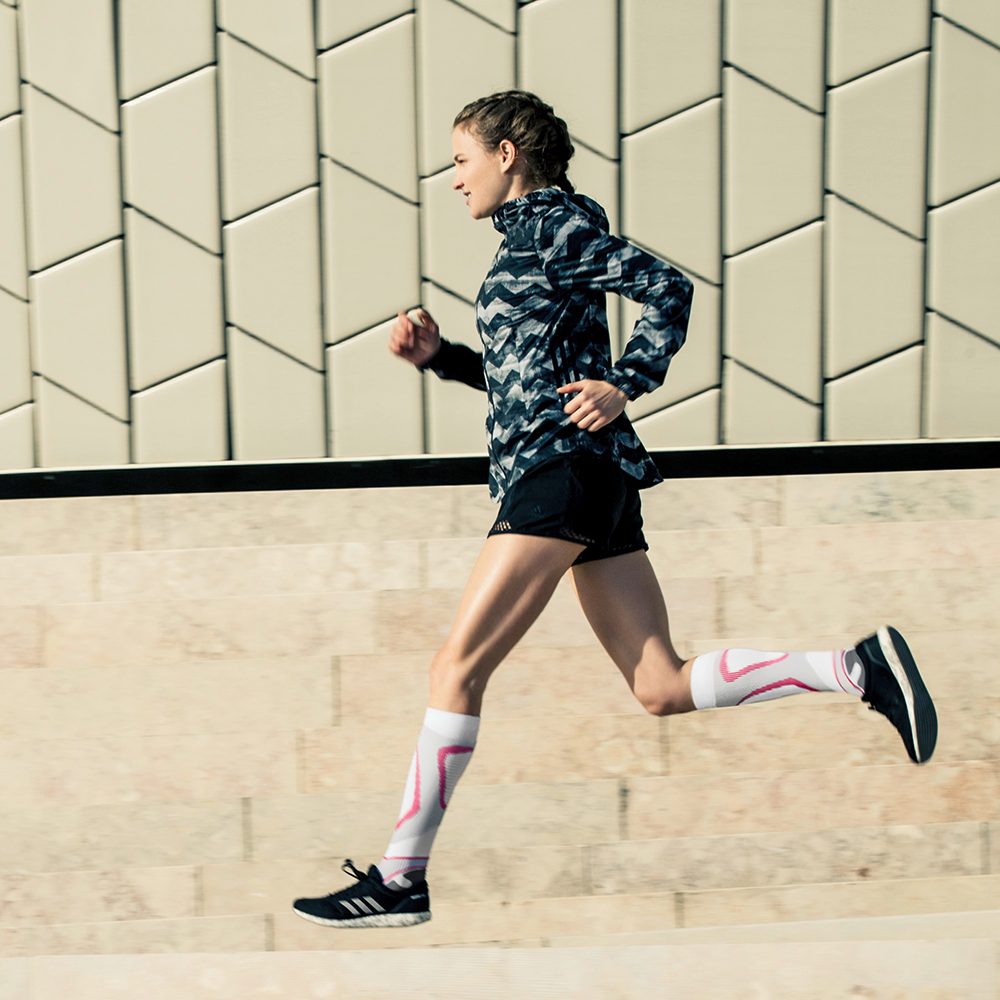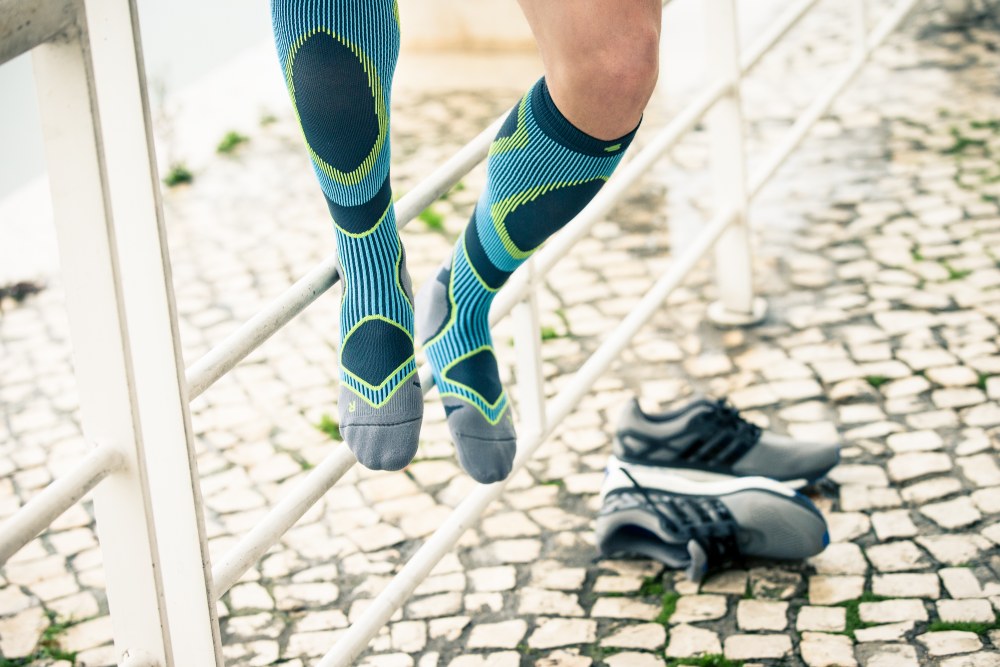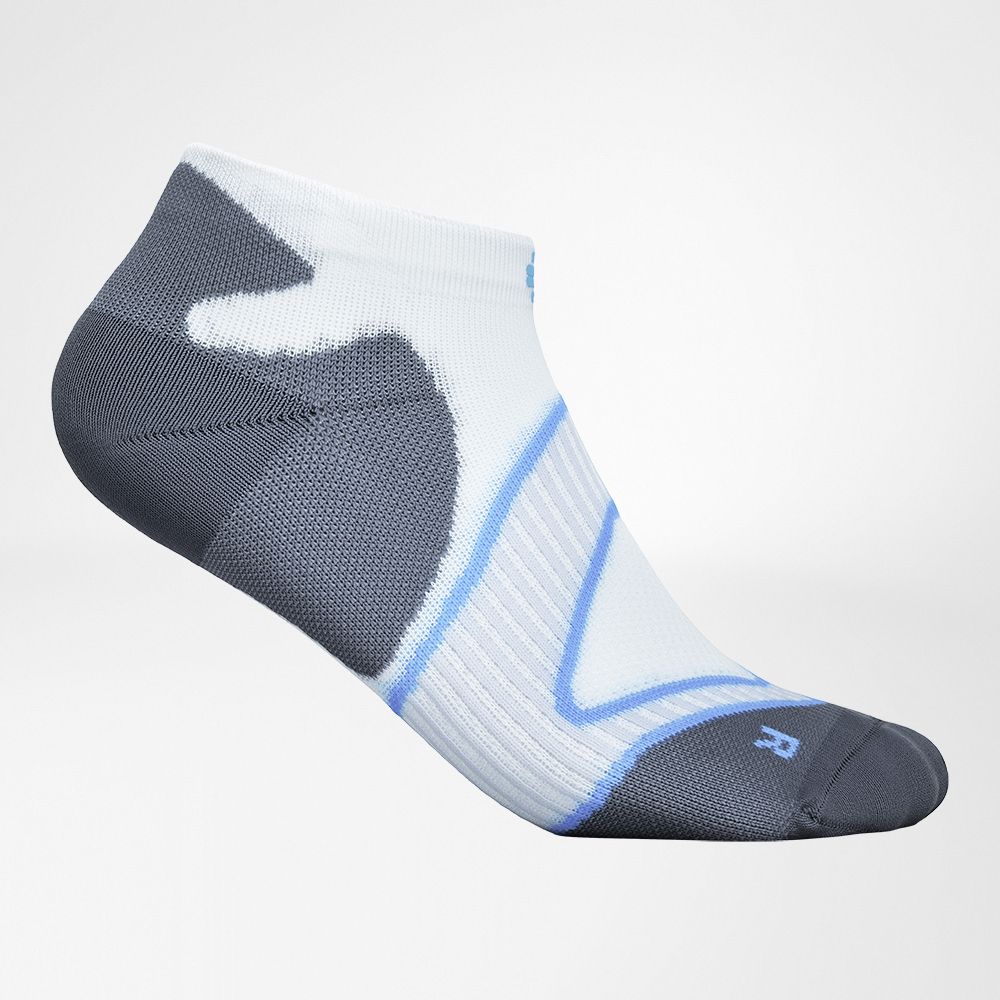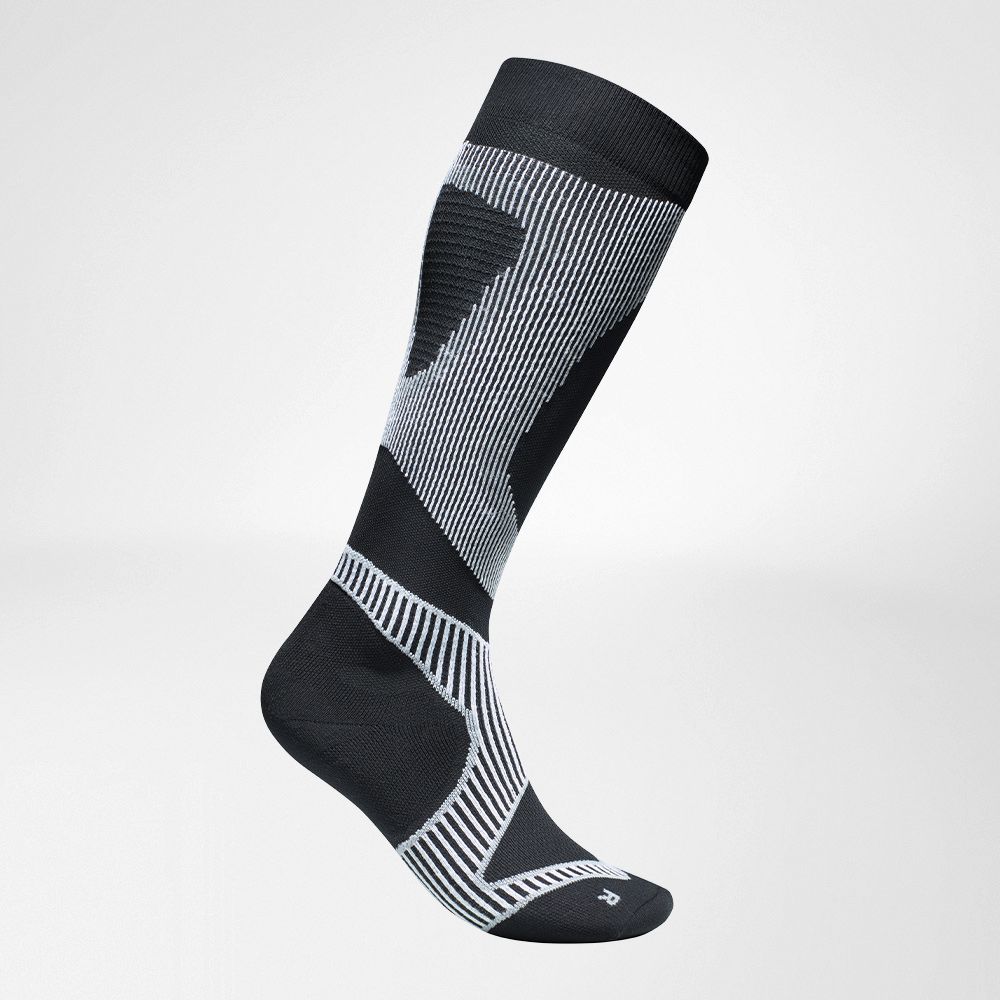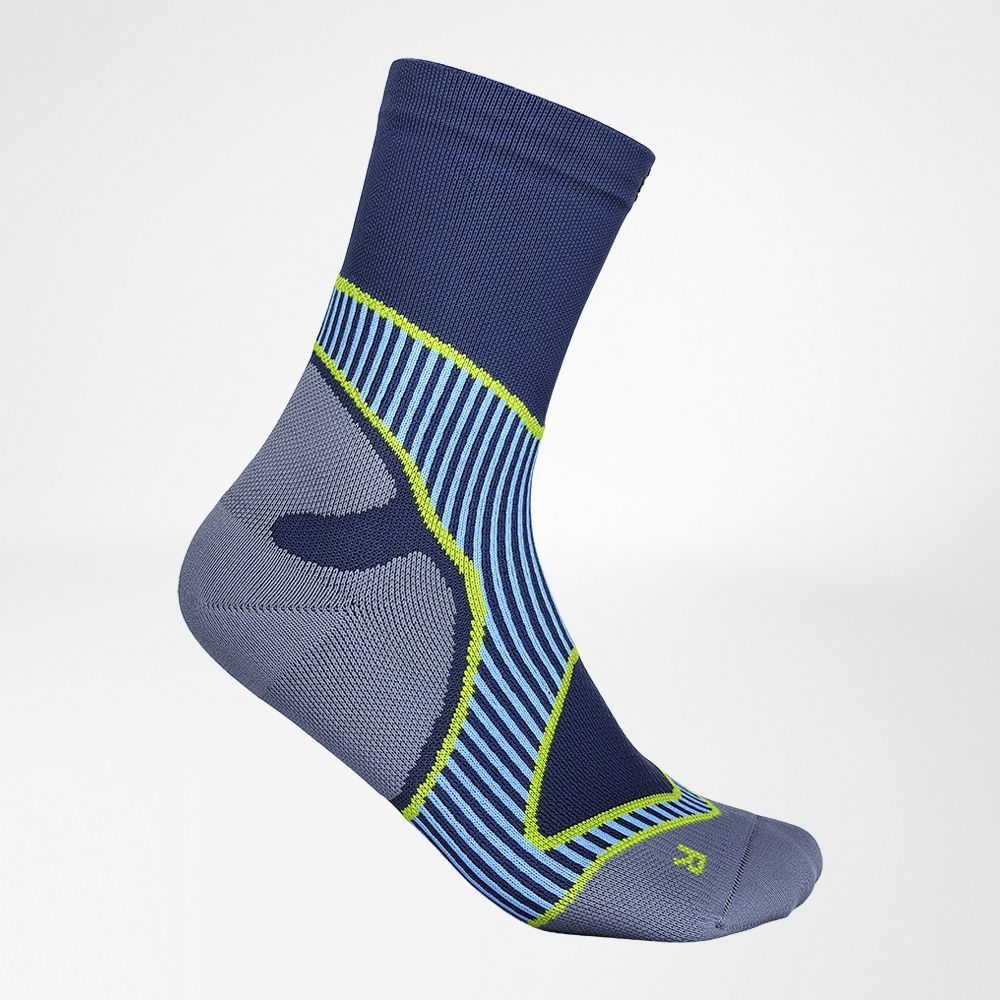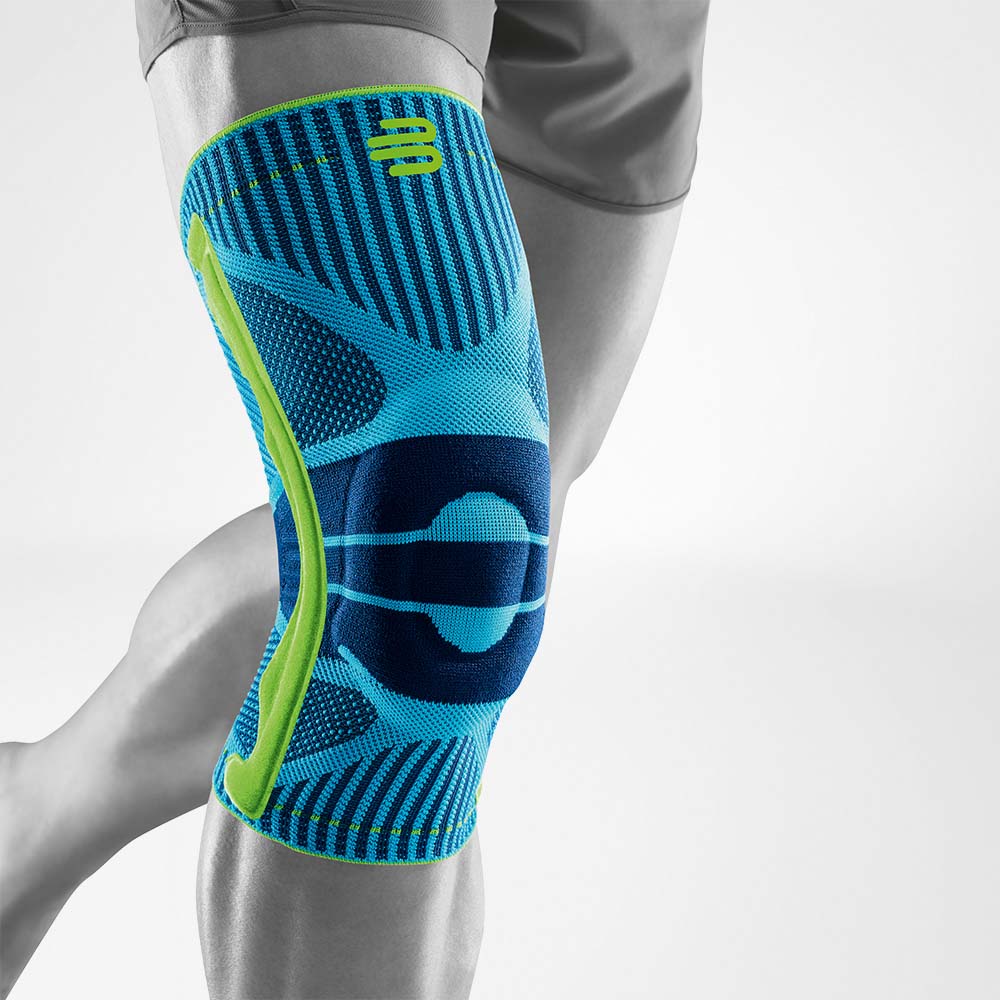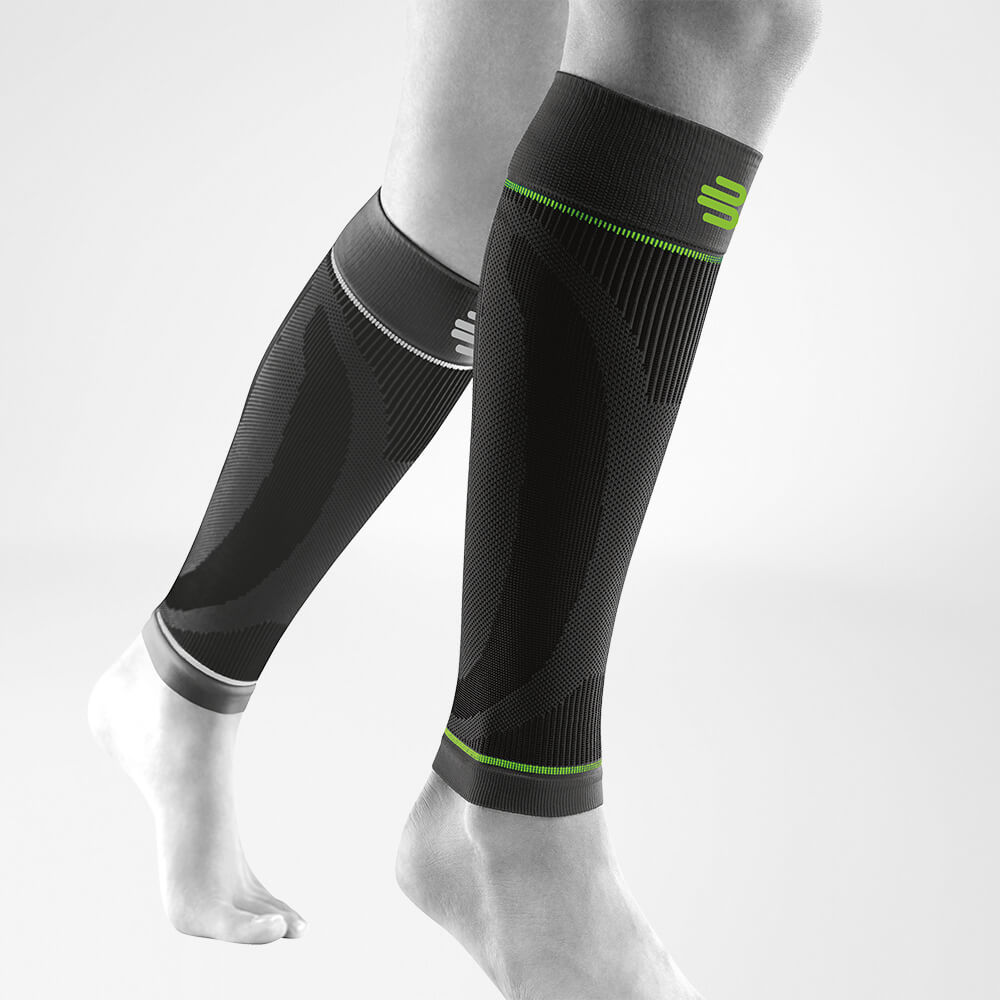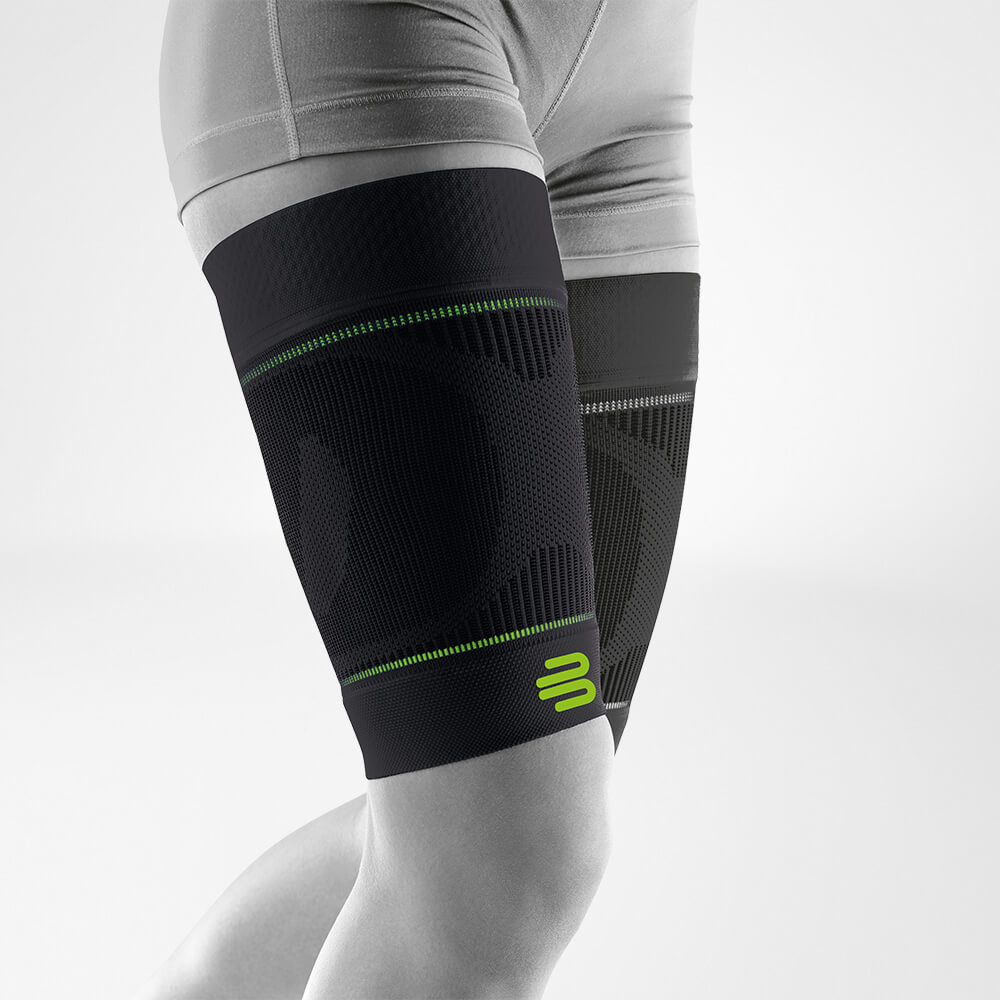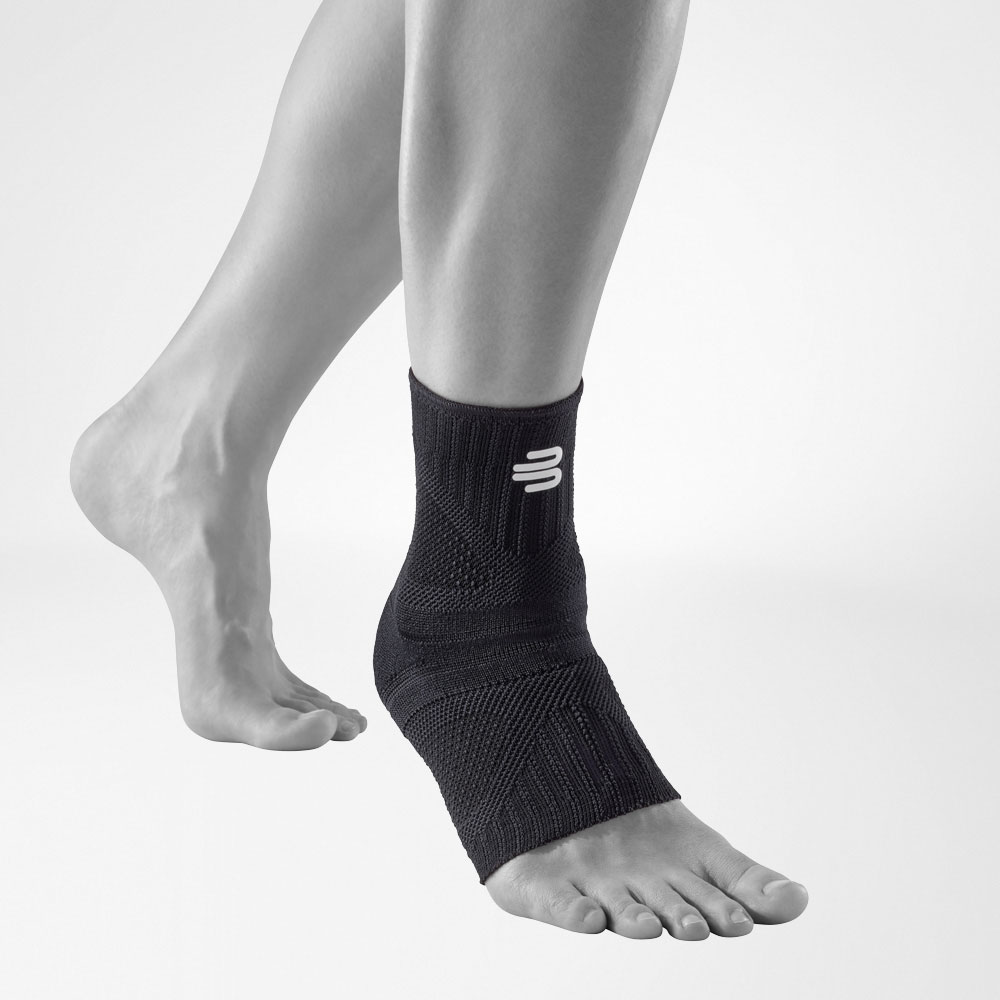
Marathon Training
Recovery during Marathon Training
The power of rest
No recovery, no success: how to regenerate properly
How do I successfully prepare for a marathon? Without a doubt, regular training sessions and the motivation to really torture yourself every now and then are important. But that alone will not help you to achieve your goal. The regeneration and recovery phases in between are just as important. On this page, we will explain the benefits your body gets from regular active regeneration and what the ideal recovery looks like during several weeks of marathon training. We will also take a look at the roles of diet and sleep for your marathon training.
The principle of supercompensation should be quite well known by now. It states that your body doesn’t just restore your original performance level as part of the regeneration process after training, but actually improves it and maintains it at this new level for a while. Figuratively speaking, you’re climbing another step. This remarkable effect largely depends on the duration of your recovery: if it’s too long, your body returns to the previous, lower performance level. So you’re staying on the current step. If the recovery is too short, you’re at risk of “overtraining”, meaning you may even cause harm to yourself and you go down one step.
So the question is: how much regeneration should you plan to ensure your performance improves, based on overcompensation? You may have guessed: this question can’t be answered easily and there’s no general rule for everybody. The correct regeneration time depends on the following, for example:
- The intensity of your training,
- the type/intensity of your regeneration (e.g. active or passive),
- the level of your training,
- your genetics, etc.
Use the cool-down phase for optimised regeneration
After every intense training session where your heart rate is really driven up and the lactate concentration is increased in your muscles, a cool-down is your first important action in the regeneration process. To “warm down”, as it’s also sometimes known, we recommend ten minutes of continuing at the slowest running speed after completing the actual training distance. This improves blood flow in the muscle tissue and guarantees a faster breakdown of lactate in the muscles. Based on 10 minutes of subsequent effort, lactate concentration in the blood is reduced by 1 to 2 mmol/L faster than at rest. In combination with compression garments, in particular, the cool down is a very effective method for initial muscle regeneration.
When we talk about cooling down, stretching cannot be omitted. Even if hard-working runners just want to go back home and have a shower when the “work” is done, it makes a lot of sense to allow yourself a few minutes to stretch. In the chapter “Running ABC and strength training”, we have summarised the most important exercises for you.
Fascia Training
“Fasciae” have been a recurring topic in the context of fitness as well as endurance training. If you haven’t heard about them: fasciae are soft tissue components of the body’s connective tissue and, together with muscles, ligaments and tendons, they are responsible for the movement of the joints. For runners, in particular, fascia training is all about letting the muscles work more efficiently, reducing regeneration time and protecting themselves more effectively from aches and injuries. If you’re not lucky enough to get regular professional massages, you can loosen little adhesions in your connective tissue with a fascia roll after training and stimulate circulation.
Variety is the key!
Running, running, running... it’s obvious that this may lead to monotony and even frustration after a few weeks, physically as well as mentally. A good marathon training plan therefore also includes one day per week on which you should do alternative sports. Ensure you deliberately use different muscle groups from running. Classics are swimming, aqua jogging or cycling. Whatever you decide: compensatory workouts should be carried out with low intensity in the “RECOM” range (about 65% of your maximum heart rate).
Since the legendary TV interview with German footballer Per Mertesacker at the 2014 World Cup, the ice tub has been quite well known as an effective regeneration method. The cold has the function of narrowing the blood vessels and minimising blood circulation. After the end of the ice shock, there is increased blood flow in the vessels: the breakdown of waste products is improved and inflammatory reactions to micro injuries in the tissue are blocked. At home, you can create this effect by showering your lower legs with cold water or by building your own ice “tub”: simply fill a bathtub with cold water (6–8 °C), even add ice cubes, if you like. It’s enough if the water just about covers your legs. Keep your legs in the water for a minimum of four and a maximum of seven minutes.
Going to a sauna or having a hot bath (up to a maximum of 45 °C) has a similar effect. Whether hot or cold (or a mixture of the two) after a tough training session is a matter of personal preference. Just try for yourself what benefits you most.
Sleep
Sleep is the epitome of regenerating and “recharging”. The nice thing about it: even though we don’t have to do anything – except to fall asleep – we allow our body to use extremely effective processes that contribute to “active” regeneration. During sleep, our immune system recovers best, the human growth hormone (HGH or somatropin) is particularly active and – especially important for runners – our protein metabolism runs at full blast, helping the muscles to get back into action.
In the last few years, a whole new industry has been created around the subject of athletes’ diets. This industry claims to have found the answers to athletes’ needs with new, incredible “superfoods”. But those who prefer to do without aronia berries, chia seeds and spirulina algae, can also have a balanced and ideal diet for marathon training. It doesn’t come as much of a surprise: the majority of your food during marathon training should consist of fresh, nutritious products such as fruit, vegetables, salad, quark, wholemeal, muesli and nuts. Of course, you’re also allowed to have a few pieces of chocolate every now and then or treat yourself to a glass of wine, as long as it’s in moderation. Also, keep the following tips in mind:
- It’s best not to push yourself on a full stomach. Instead, wait two or three hours after eating before you start your training. If you want to go running straight after getting up, don’t do that on an empty stomach but have a quick and easily digestible energy supplier such as a banana or an energy bar.
- Especially after training, you should quickly replenish your glycogen stores (carbohydrates are stored as glycogen in our bodies) to accelerate regeneration. Eat a balanced meal with a focus on carbohydrates (rice, pasta, potatoes etc.) a maximum of two hours after your run.
- The famous “pasta party” (for “carb-loading”) on the evening before a marathon is not totally wrong. However, it’s better to completely empty your carbohydrate stores already five days before with a (not too extensive) speed run, then eat meals low in carbohydrates for two days, and after that, start to refill the stores with sufficient pasta, rice etc. The glycogen stores in our body work in a similar way to supercompensation using breaks in training: they don’t just absorb as many carbohydrates as before but, after total depletion, a little more. You can use this effect to keep going for longer with the resources stored up.
- You should try all nutritional supplements, energy bars or gels previously in training if you want to have them during your run because they could cause huge problems for your digestive system, particularly since it’s running on maximum because of your top athletic performance. Another problem: usually, these special “athletes’ products” are real sugar bombs that temporarily spike your insulin level – but need to be refilled after a short time.
OOne of the most important aspects connected with regeneration is staying hydrated. All physically active people know that drinking enough is important. But why exactly? As you probably know, the human body consists of 60 to 70% water. It’s practically involved in all essential metabolic processes. For example, water regulates cardiovascular functions and digestion, it’s a solvent for salts and minerals, and it transports nutrients as well as breakdown products. The points mentioned last, in particular, emphasise why a balanced water supply is so important for regeneration after endurance sports and during marathon training. Water helps to flush out, for example, lactate from the body as quickly as possible.
How much should I drink before, during and after running training?
If we consider that we lose as much as two to three litres of water without exercise, merely from breathing, sweating and urine or stool, it quickly becomes apparent that we have to “refuel” even more after intense running training where a further loss of fluids comprising several litres takes place. Otherwise, there’s a risk of headache, fatigue and cramps. To avoid this, you should drink 200 to 400 ml of fluid before you start your training. This will allow your body to remain hydrated for longer, and muscle problems will be minimised significantly.
When you’re running, you only need to drink something if you intend to run for longer than an hour. The quantity, much like the generally recommended amount of fluid, cannot be specified in general. It depends, for example, on your body weight, the length of your run, the outside temperature and your individual extent of sweating. As a rule of thumb, we recommend 0.5 litres per hour of running. Drink in little mouthfuls, otherwise, there’s a risk of getting a stitch.
After the run, you should replace lost fluids as quickly as possible, whether you were out and about for two hours or just half an hour. This makes regeneration easier and prevents painful cramps, for example. According to experts, the quantity should be at least 600 ml. A simple test tells you how much exactly: right before and right after training, step on the scales without any clothes on. Ideally, you should make up the weight difference by drinking.
Very important: even though it should form the basis for staying hydrated, water alone is not sufficient to keep a balanced fluid supply. After all, you don’t just sweat out water but also electrolytes such as magnesium, potassium, sodium and calcium that regulate the electrical activity of muscle and nerve cells. They have to be restocked so your body can regenerate. Not every drink helps with that. Try to avoid drinks with a lot of sugar, caffeine or alcohol. Instead, we recommend isotonic thirst quenchers and those high in minerals, such as your own mixture of apple juice and sparkling water or a non-alcoholic beer. If you like mixing your own drink, add 2 grams of salt (sodium chloride) or baking soda (sodium bicarbonate) per litre.
And at some point, after months of deprivation and stress, you will have done it – the marathon is completed!
But what now? It’s simple: celebrate your achievements – and take a break. You shouldn’t do any intense training for at least three weeks. Instead, ensure active recovery. You can do that by going on very gentle regeneration or recovery runs. They will help to actively restore physical resources and therefore need to be extremely leisurely (60 to 65% of your maximum heart rate and 60 to 90 seconds slower than the competitive marathon speed). Additionally, you can make use of all the regenerative tips mentioned above – and a few weeks later, you can prepare for your next run with new power.

